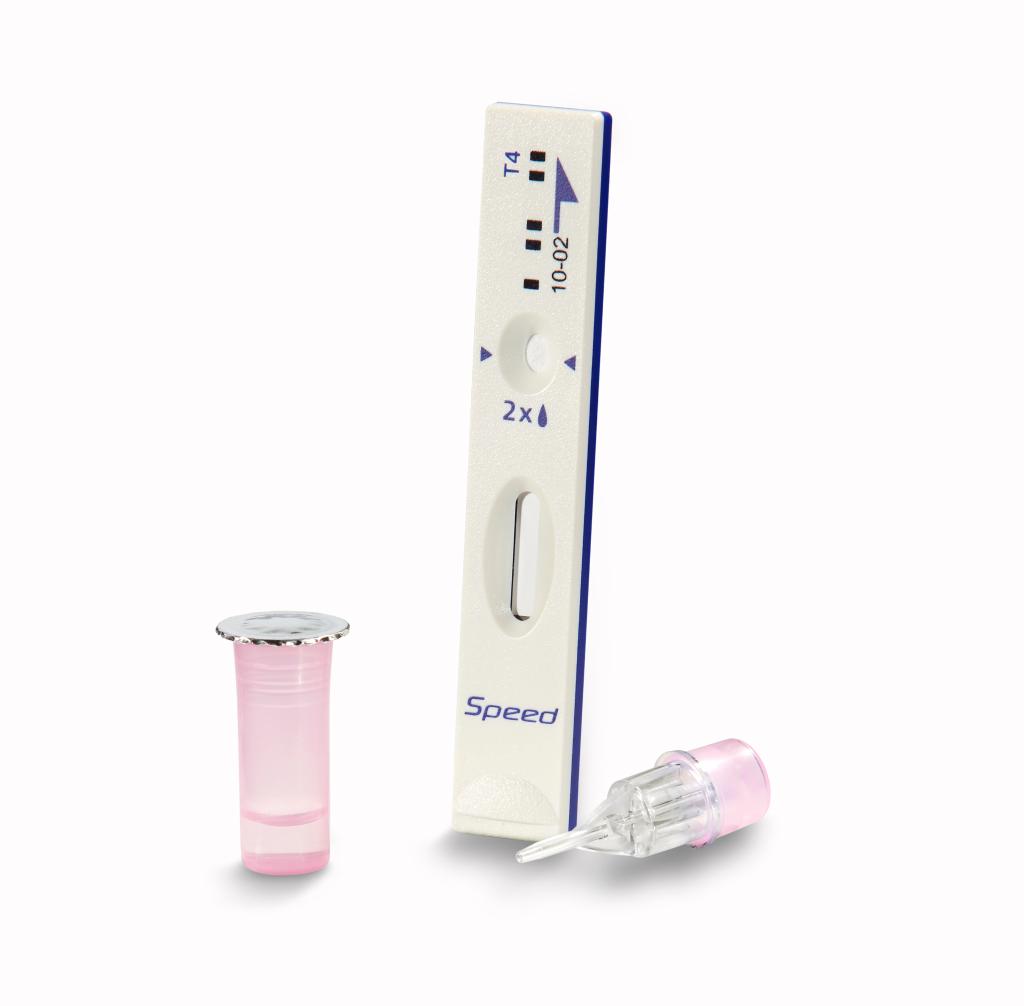Speed T4
Quantitative determination of serum or plasma total circulating T4
| Presentation | Advantages | |
|---|---|---|
|
Method: Immunochromatography Analysis: Quantitative determination of the total circulating serum or plasma T4 Sample: Serum, heparinized plasma Reading: 15 minutes (including 5 minutes incubation) Presentation: 6 tests Storage: 18 months between 2°C and 8°C Performances: The correlation coefficient R² is 0.91 and 0.95 for the canine and feline samples respectively (1) |
|
| Why use Speed T4TM ? |
|---|
|
Hypothyroidism and hyperthyroidism are among the most common endocrine disorders in dogs and cats. (2) (3) (4)
Thyroxine is a hormone synthesized by the thyroid gland. Measurement of total T4 provides useful information for the selection and diagnosis of thyroid diseases.
|
| When to use Speed T4TM ? |
|---|
|
Hypothyroidism is the most common endocrine disorder in older dogs. Whereas diagnoses are made on average at the age of 7 years, the so-called "at risk" breeds (Doberman, Pinscher, Golden Retriever, etc.) can present symptoms as early as 2 years of age. (4) In cats, hyperthyroidism is most commonly diagnosed between 12 and 13 years of age. Some risk factors increase the likelihood of hyperthyroidism such as wet food or sex (females are more commonly affected)(2)(3) |
Protocol for the use of Speed T4TM
See study
References
(1) B. Rannou, Evaluation of a new point-of-care immunoassay (Speed T4™) in the measurement of feline and canine total thyroxine, ESVCP Congrés de Nantes, Octobre 2016.
(2) Carney HC, Ward CR, Bailey SJ, Bruyette D, Dennis S, Ferguson D, Hinc A, Rucinsky AR. 2016 AAFP Guidelines for the Management of Feline Hyperthyroidism. J Feline Med Surg. 2016 ;18:400-16
(3) Ettinger SJ, Feldman EC. Textbook of Veterinary Internal Medicine. 7th Edition, 2010. Saunders Elsevier, St Louis, Missouri. ISBN: 978-9996962837 (v.2)
(4) Feldman EC, Nelson RW, Reusch C and Scott-Moncrieff JC. Canine and Feline Endocrinology. 4th Edition, 2015. Saunders Elsevier, St Louis, Missouri. ISBN: 978-1-4557-4456-5.
(5) Graham P.A. et al. Etiopathologic findings of canine hypothyroidism. Vet Clin N Am Small Anim Pract 2007;37: 617-632



